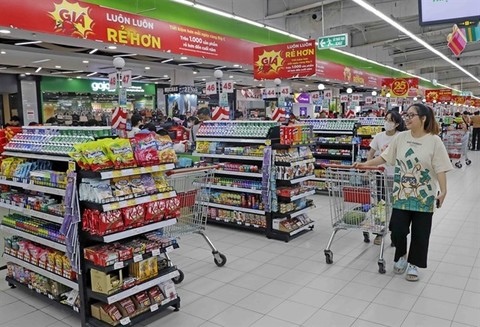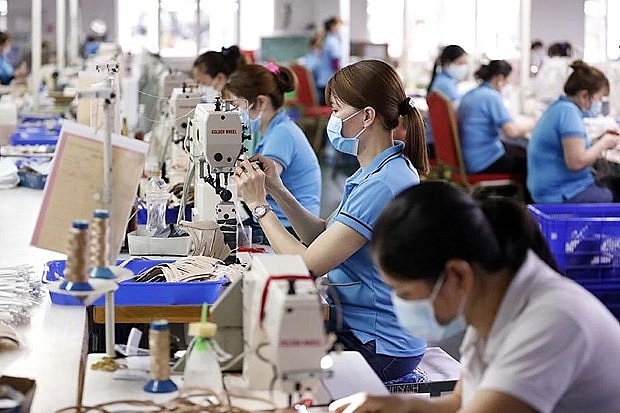E-commerce yet to replace traditional trade channels
E-commerce yet to replace traditional trade channels
Although e-commerce has been booming, many businesses still focus on developing traditional trade channels that they have long considered to be sustainable.

People shop at a supermarket in Hà Nội. — VNA/VNS Photo Trần Việt |
Tiến Đặng, Digital Marketing Manager at L'Oreal Vietnam, told Znews that his firm has facilitated the expansion of its distribution network through online channels.
However, he said that each channel has a different file of customers, and expanding new distribution channels is not because traditional trade channels are facing difficulties.
He added that customers who prefer traditional trade channels are used to going to stores to buy, so when his company expands distribution channels, offline sales increase dramatically in all channels instead of decreasing.
Đặng Thanh Định, CEO of Nerman which provides cosmetic products for men, said that when his brand first launched, he only concentrated on selling goods via online channels.
But after realising the potential of the direct distribution system, he brought his company's products into large cosmetic chains such as Guardian, Hasaki and An Khang Pharmacy, Định told Znews.
In the past two years, Nerman's revenue through traditional distribution channels has continuously increased, accounting for between 15 and 20 per cent of its total revenue. After the COVID-19 pandemic, people flocked to offline channels to shop because they want to directly touch and try the products. As Nerman's products lean towards scent, direct sales will be better for customers, he said.
According to Định, selling through traditional distribution channels will be more sustainable and will become a trend in the coming years.
A recent survey by the Business Association of High-Quality Vietnamese Products reveals that traditional retail channels, particularly grocery stores, continue to dominate due to their appeal in terms of quality, affordability, and, most importantly, convenience or friendliness.
The association's chairwoman Vũ Kim Hạnh said that a new retail model, the mini family mart, has been emerging in recent years. These are family groceries but are arranged and operated similarly to the system of a modern supermarket, which is becoming more and more popular in HCM City, Hà Nội and other big cities.
Businesses need to adapt
The economy is forecast to remain difficult this year, she said, adding that the association’s survey results on consumer spending levels in 2024 show more optimistic signs than last year, but the increase is not significant.
Only about 30 per cent of surveyed consumers said their shopping spending in 2024 will increase slightly compared to 2023, while over 40 per cent said they will continue to cut down on shopping, and 30 per cent said that there would be no change in their purchasing levels compared to 2023.
Hạnh said the first six months of 2024 will still be a difficult journey for businesses in terms of attracting consumers and expanding market share.
To adapt to this context, L'Oreal has chosen to adjust product capacity and develop new products with similar technologies to old products but sold at a cheaper price, Znews reported.
As for Nerman, the company will focus this year on promoting good distribution through traditional channels, especially supermarkets. The firm also plans to change product packaging and brand identity to be more suitable for offline channels.
Hạnh said her association will pay attention to providing more support for traditional markets in the time to come.
Supermarket systems have their strategies and orientations, the State cannot participate. But managing and promoting traditional markets is very necessary to support Vietnamese businesses in bringing goods into these markets which are regarded as the largest distribution channels in the domestic retail market, she added.
Retail activities saw an 8.5 per cent increase in February with the total retail sales of goods and consumer service reaching VNĐ509.7 trillion (US$20.63 billion), according to the General Statistics Office (GSO).
The figure contributed to a year-on-year rise of 8.1 per cent in total retail sales of goods and revenue from consumer services in the first two months to VNĐ1.03 quadrillion. Of the total, retail sales of goods were estimated at VNĐ798.3 trillion, accounting for 77.4 per cent of the total and up 6 per cent over the same period last year (up 4.5 per cent if excluding the price factor).
























